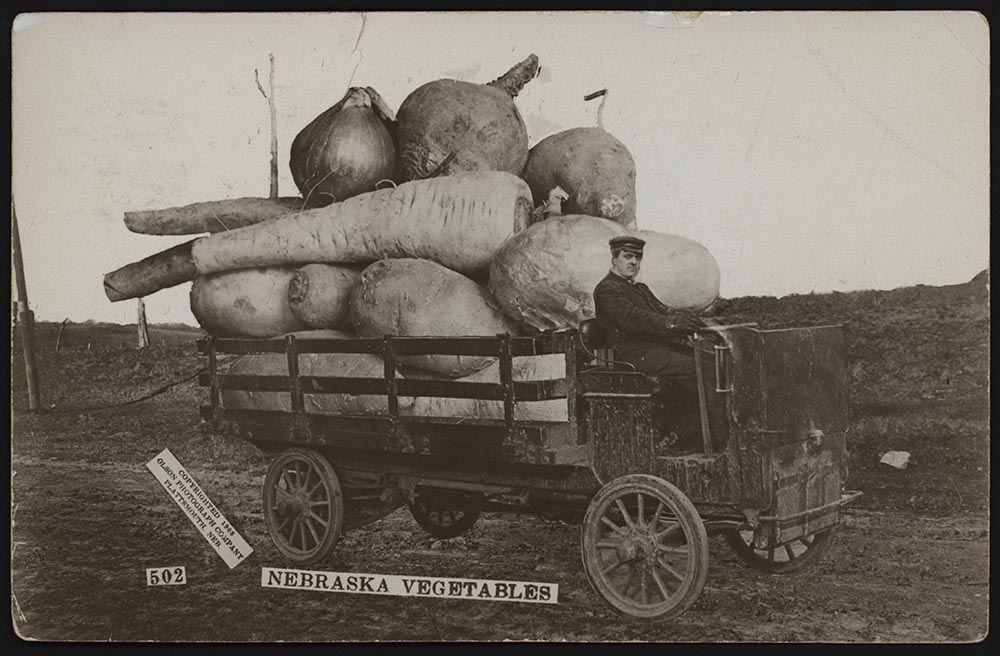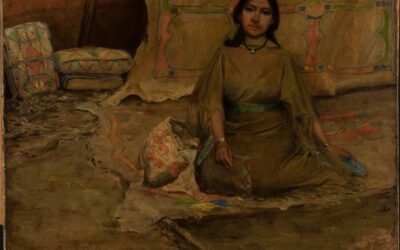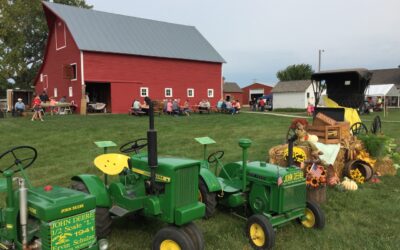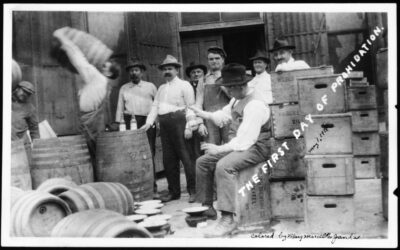If you have ever had to load film into a camera, then you may be familiar with double exposures. Double exposures sometimes happen if the film jams inside of the camera or if you forget to advance the film before taking another shot. Either way, you may be in for a surprise once the film is developed to reveal a single photograph with two images layered on top of each other.
We have historic examples of multiple exposure images in our collections at History Nebraska. Many of these images were clearly combined by accident. But some Nebraska photographers used double exposure techniques to deliberately create photographic illusions. All of the images featured below are preserved in the photograph collections of History Nebraska.
Happy Accidents: Accidental Double Exposure Images
Emanuel Wolfe (1858-1933) was a businessman and photographer who documented life in Neligh, Nebraska, mainly from 1900 to 1930. He used a large format camera which captured images on glass plate negatives.

In this image, Wolfe accidentally layered two shots of crowds watching athletes compete in different track and field events. (RG2836.PH000000-001670)
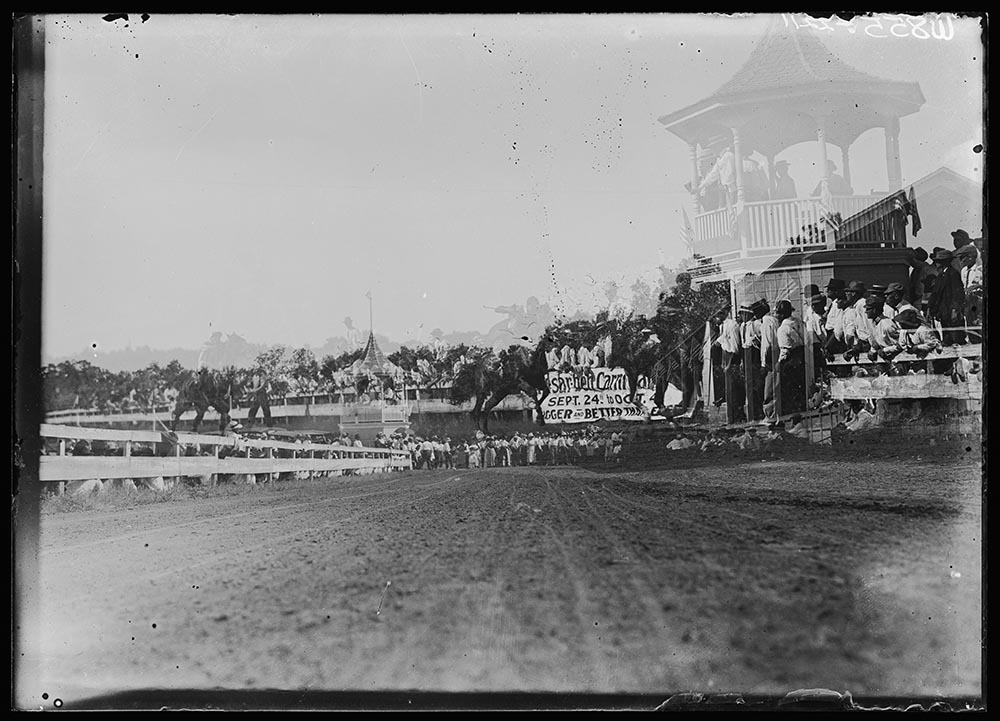
Emanuel Wolfe also produced this double exposure image which combines two views of crowds watching a horse race. (RG2836.PH000000-002211)
Click here to view more images in the Emauel Wolfe collection.
Nathaniel Dewell was a prolific photographer based in Omaha, Nebraska. He was especially active from the 1920s to the 1940s. He documented a wide variety of local buildings, as well as scenes at public and private events. He is best known for his photographs of early aviation in Nebraska.
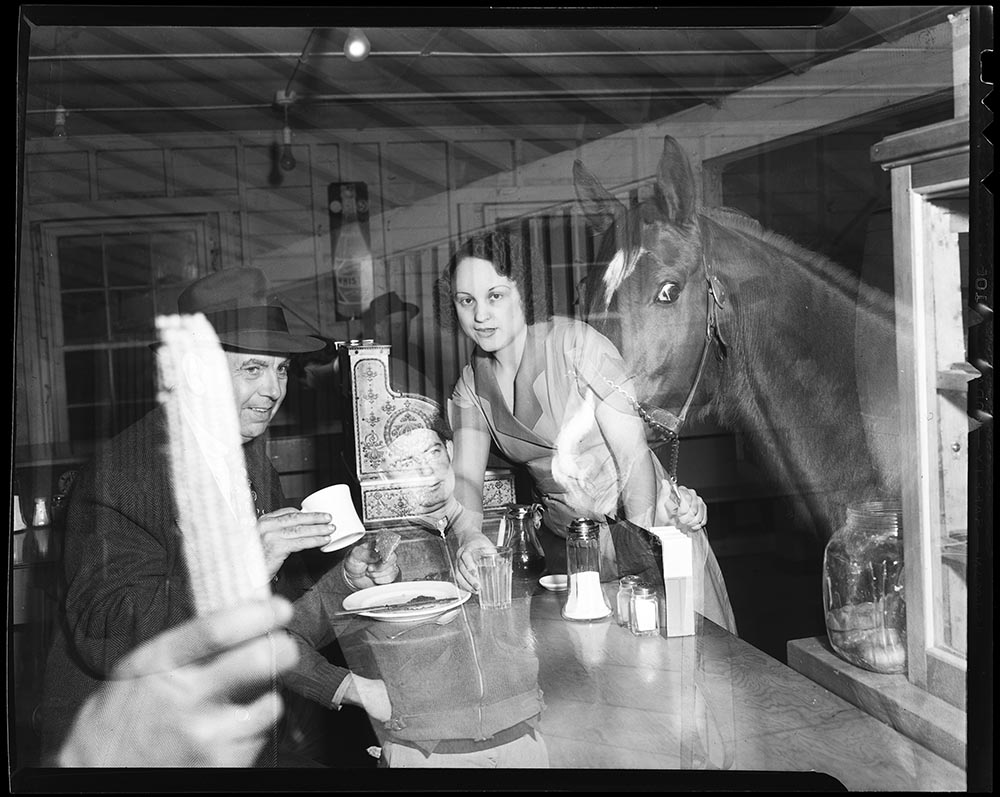
In this image from 1939, Dewell mistakenly captured two shots on the same negative. One shot shows a man holding the reins of a horse, while the other image features a woman serving food to a customer. The combination results in a humorous image in which it appears that a horse is visiting for a bite to eat. (RG3882.PH000002-000748)
Click here to search the entire Nathaniel Dewell photograph collection.
Photographic Tricks: Images Created with Deliberate Double Exposure Techniques
Early photographers discovered that they could take advantage of double exposures to create photographic illusions. Some illusions were created in-camera, meaning that the same negative was repeatedly exposed to light in order to capture multiple image layers within one frame. Other photographers manipulated negatives in the darkroom to layer the images visible in the final print. As cameras and darkroom technology improved, these photographic illusions became more sophisticated and less obvious to the viewer.
“Spirit photographs” were said to capture the images of departed loved ones. While some actually claimed to have captured ghosts in their images, most photographers simply inserted the portrait of a deceased person into a new image with a family member.

This 1879 photograph was donated by a Nebraska collector interested in spirit photography. (RG3507.PH000011-000009)
David P. Abbott (1863-1934) lived and worked in Omaha, Nebraska, but he became nationally famous as an amateur magician and author. His book “Behind the Scenes with the Mediums” exposed deceptive techniques used by fraudulent spirit mediums. He also wrote about his own magic feats and illusions. He is still remembered by fellow magicians as the inventor of several influential magical tricks.

This portrait of “Abbott the Magician” used photographic tricks to create the illusion of Abbot cutting off the head of his assistant. (RG0813.PH000000-000683)
Exaggeration postcards were humorous images created with darkroom photographic tricks. Such postcards often bragged about the bountiful crops and livestock grown in different states. Nebraska photographers created and sold a variety of these exaggeration postcards.
You can view more examples of exaggeration postcards in our photograph collections here.
Edward R. Dack was a photographer in the town of Monroe in Platte County, Nebraska. He captured life in the town, as well as many portraits of his family members. History Nebraska has a collection of 87 glass plate negatives taken by Edward Dack, including two images using double exposure techniques.

Dack created a second double exposure image of a woman playing cards against herself. (RG5762.PH00000-000083)
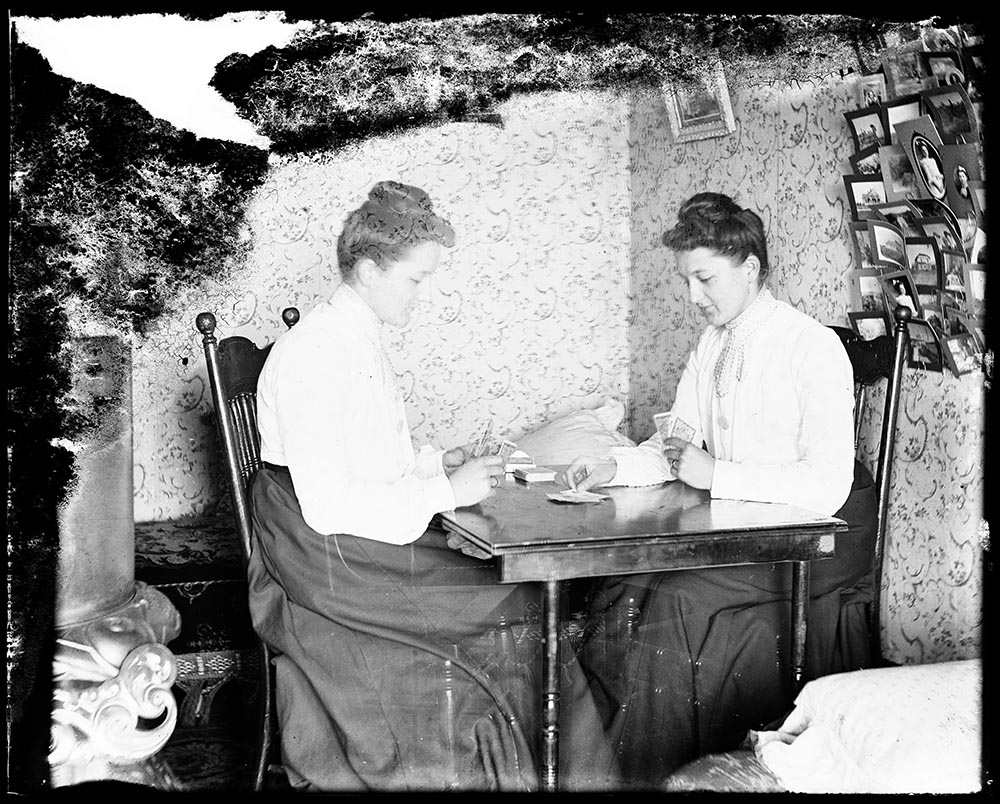
Edward Dack used multiple exposures to create the illusion of a woman playing a game of cards against herself. (RG5762.PH000000-000084)
You can explore more historic images preserved by History Nebraska by visiting our Digital Collections Portal.


